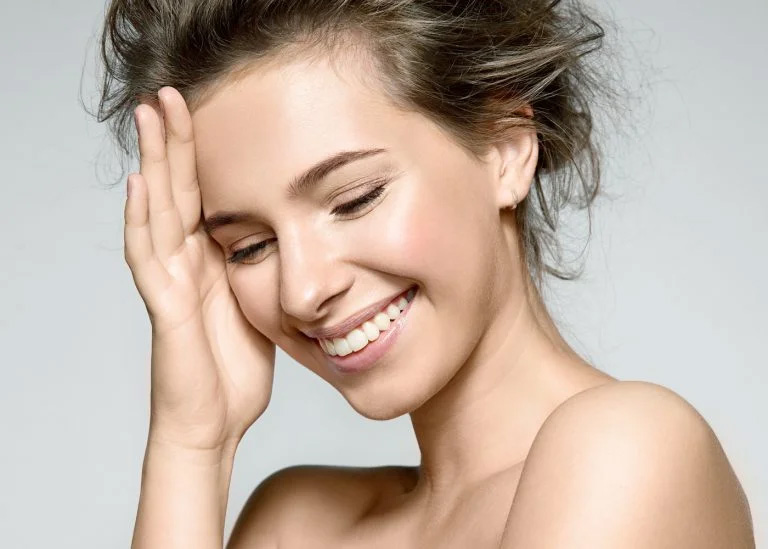Like the term “acid”, “peel” is another word that sounds far from enticing. In fact, “peel” is the unflattering term given to a treatment that can actually do a world of good. If your face suffers from age spots, irregular pigmentation, acne scars, dilated pores, redness, ridges or lines, this procedure is for you.
A little background
For as long as we can remember, women have been applying facial peels to exfoliate their skin and restore its radiance. Since the beginning of time, the best method for applying this treatment has been acid – the type found naturally in fruits and plants. In Egypt, women collected tartaric acid, which is found in wine sediment, from the bottom of barrels. Later, during the Renaissance, citric acid from lemon juice was the liniment of choice. Today, glycolic acid obtained from mashing sugar cane is most often used.
What exactly is a “peel”?
A peel is a facial treatment that entails stimulating the epidermis and dermis through the application, using a paint brush or gauze pad, of a substance that causes the breakdown of keratin, the main protein found in the most superficial layer of the skin, to activate the release of dead skin, as well as new collagen and elastin cell production. Far from destroying the skin, this action actually causes it to regenerate. The objective is to eliminate skin irregularities, to blend and brighten skin tone, and to smooth the skin and improve its elasticity.
The different types of peels and their active components
- Glycolic acid treatment (AHA): acid derived from sugar cane
AHA is particularly effective for peels due to its small molecule size, thereby allowing for a thorough and deep yet gentler exfoliation.
– AHA aesthetic peel
This “soft” version of a peel uses a solution that never exceeds a glycolic acid content of 19 per cent. This treatment is carried out with no medical training at a beauty institute. It is a superficial treatment that requires many sessions and produces subtle results.
- AHA medical peel
This type of peel works at a deeper level and is considered to be a “moderate” or “deep” treatment compared to the previous type due to its glycolic acid concentration, which ranges from 20 per cent to 70 per cent. This type of treatment, used most often by those over the age of 40, is ideal for addressing issues such as aging skin manifested in the form of brown spots, skin irregularities, loss of elasticity and radiance, as well as for younger people who have dilated pores, acne scars, or skin that is compromised due to overexposure to the sun. This treatment requires medical supervision, pre- and post- peel treatments, and is offered at Epiderma. Note that AHA medical peels are gentle compared with TCA peels (see description a little farther on).
- Salicylic acid or beta-hydroxy acid peel (BHA): derived from willow bark
Soluble in fat rather than water (like AHA), BHA has antimicrobial and anti-inflammatory properties. It is applied to the skin to penetrate the sebaceous gland. By effectively targeting blackheads that block the skin’s pores, this treatment is ideal for acne, melisma and post-inflammatory hyperpigmentation.
- Mixed peel (AHA/BHA)
A solution combining the two products is sometimes used to treat conditions such as hyperpigmentation in the case of acne-prone skin; it is administered in variable proportions and concentrations.
- Trichloraceric acid (TCA) peel (TCA)
Composed of depigmenting active ingredients, this moderate to deep treatment is generally more radical and painful. It may require anaesthetic and must be carried out by a physician.
- Phenol peel
Administered under general anaesthetic in an operating room, this treatment is very deep and is used by plastic surgeons to fill deep lines. The results are more striking, but this radical treatment has more risks and is not suitable for everyone.
Treatment and protocol
As an example, for the best results the AHA medical peel generally requires eight sessions every two weeks for the initial treatment, followed by scheduled maintenance sessions every three months. The number and duration of intervals between treatments depends on the individual. Prices vary from $150 to $175 per session and last approximately 20 minutes each.
The protocol is as follows:
- Initial consultation with a technician who examines the skin, sets progressive treatment parameters, and gives the client relevant information about the strict care routine that must be followed for two weeks following treatment.
- Sessions: The liquid solution is applied to the face.
- The solution is left on the skin to penetrate for three to five minutes, under constant supervision.
- The skin reacts: tingling is felt and temporary redness appears.
- The solution is then properly neutralized by applying several washcloths soaked in cold water.
- The client must carefully follow the skin care protocol after each treatment.
Contraindications and side effects
This type of skin care is not recommended during pregnancy or nursing, in cases of chronic dermatosis, active dermatitis, insulin-dependent diabetes, active herpes, or hypersensitivity or allergy to the product used.
The gentler the method used, the lower the risks. Redness and discoloration of the skin are normal, but temporary reactions can occur in the days that follow treatment. It is necessary to be vigilant in choosing the method and clinic, and to be prepared to meticulously follow all of the instructions given before, during and after the treatments in order to prevent complications, even though these are rare (burns, swelling, bleaching of the skin). Sun exposure is forbidden in the days preceding and following treatments.
